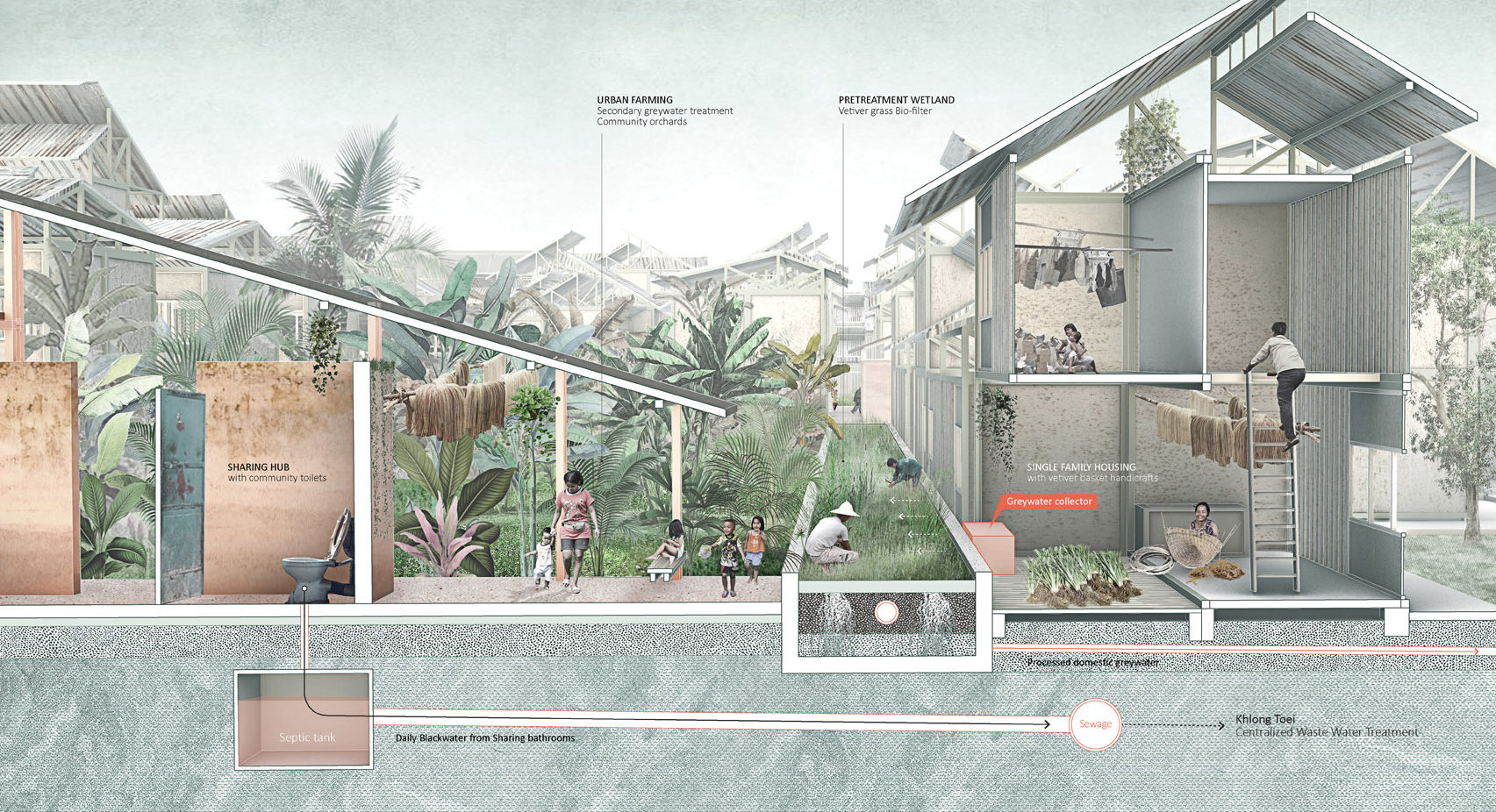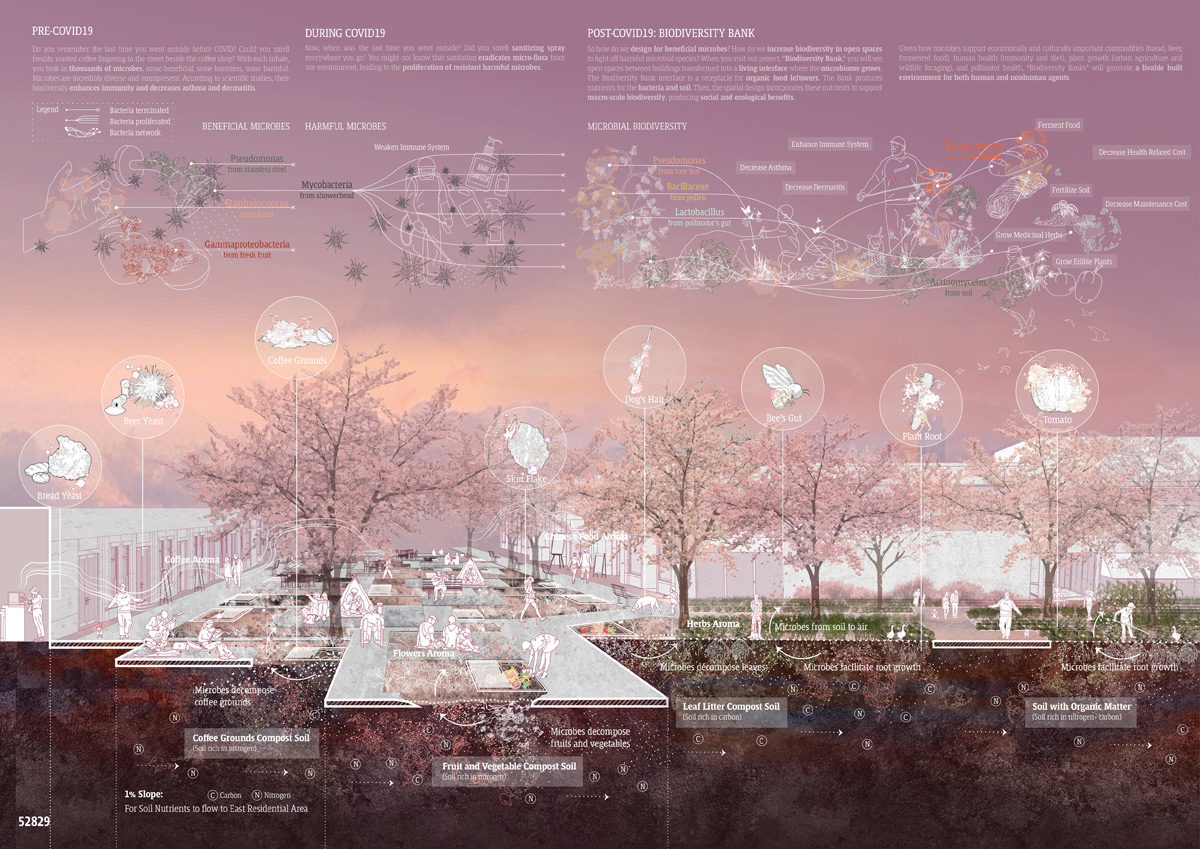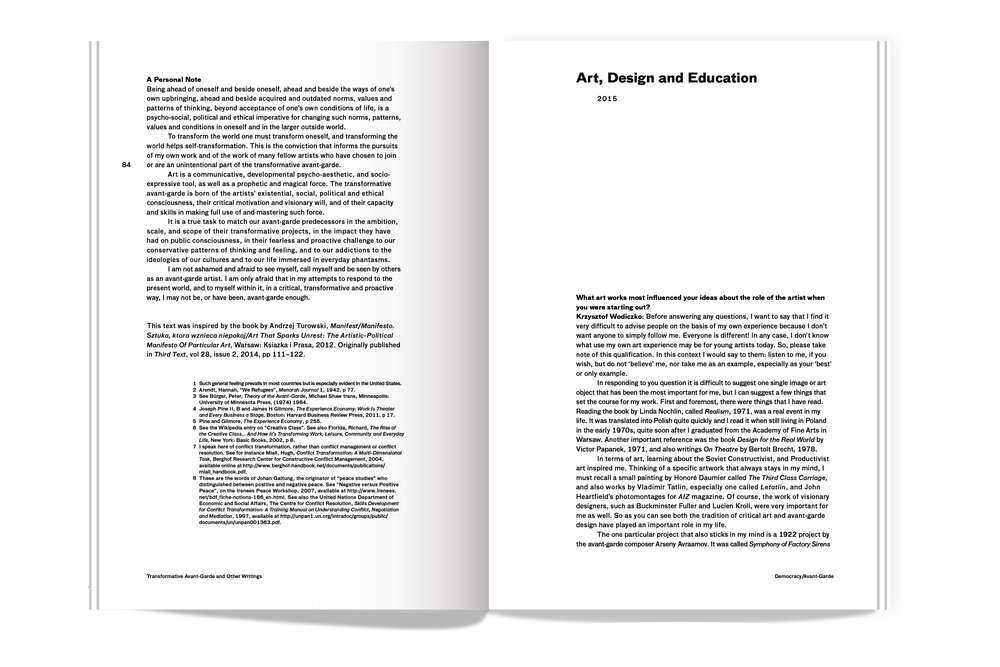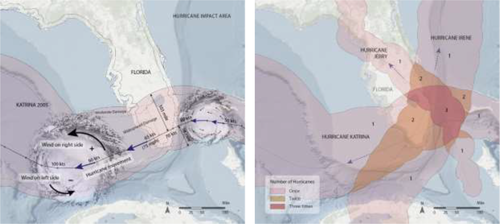MUP program’s Andriani Atmadja, Cecley Hill, Whytne Stevens among six recipients nationwide of the 2020 APA Foundation Scholarship
Harvard Graduate School of Design degree candidates Andriani Atmadja (MUP ’21), Cecley Hill (MUP ’21), and Whytne Stevens (MUP ’22) are among the six recipients of the American Planning Association’s (APA) 2020 APA Foundation Scholarship , one of the highest student honors in the field. According to the APA’s mission statement, the foundation and its scholarship help make planning education more accessible, attract the most talented individuals to the profession, and work toward making the profession more diverse. Each of this year’s scholarship recipients is motivated by their personal experience and their desire to create stronger futures for their communities through equity, environmental stewardship, and economic development.
Atmadja, Hill, and Stevens are each enrolled in the GSD’s Master in Urban Planning program, where they study and research a variety of topics. See below for a gallery of select work from the honorees.
“I am truly honored to get this award from APA,” Atmadja says. “It helps me to further my mission of enhancing resilience planning for vulnerable communities that seek social justice and equity in its practice.”
“It’s an honor to receive this award alongside two other fantastic women from the GSD,” says Hill. “I’m incredibly thankful for the APA Foundation’s support in this critical period and look forward to joining in work towards building more equitable cities around the world.”
“I’m honored and very grateful to have received this scholarship from the APA Foundation and see it as one of many ways to support students of color in urban planning, especially given our current sociopolitical climate,” Stevens says. “Receiving this scholarship helps me to continue exploring topics through a social equity framework such as participatory planning, community development, and people centric urban design while studying urban planning at the GSD.”
APA and its professional institute, the American Institute of Certified Planners, are dedicated to advancing the profession of planning, offering better choices for where and how people work and live. The more than 40,000 APA members work in concert with community residents, civic leaders, and business interests to create communities that enrich people’s lives. Through its philanthropic work, APA’s Foundation helps to reduce economic and social barriers to good planning.
Learn more about the 2020 APA Foundation honorees at the APA’s website .
With study of urban sanitation and flooding in Bangkok, Tina Yun Ting Tsai receives 2020 ASLA Award of Excellence
Tina Yun Ting Tsai (MLA ’20) has received an Award of Excellence in the Residential Design Category in this year’s American Society of Landscape Architects Student Awards . Her project, Informality as Filter: A Renewed Land Sharing Plan for Khlong Toei Community , examines informal settlements in Bangkok, specifically the Khlong Toei Community, as a way to understand and solve problems of urban sanitation and flooding. The project aims to preserve and protect local culture and citizens by introducing a land-sharing plan that promotes improvements of the existing water supply and food production chains. Professor of Landscape Architecture and Technology and Associate Dean for Academic Affairs Niall Kirkwood and 2020 Design Critic in Landscape Architecture Kotchakorn Voraakhom were instructors in the option studio for which Tsai completed the project.
The ASLA jury explains: “Bangkok’s Khlong Toei community—an informal settlement along one of the city’s many canals—suffers from contaminated water, degraded health conditions, and the constant threat of relocation. But if this impermanent community were made a permanent and planned part of the city, as this project proposes, a mutually beneficial arrangement between inhabitants and city government could blossom. Starting with a multi-functional infrastructure of shared toilets feeding a wastewater treatment plant, greywater would be generated for use in community orchards. A retention pond and storage tanks would collect excess monsoon rainwater to be used during the drier months. By addressing this community’s needs, rather than shunting it to another temporary location, the local government would advance social equity while improving urban hygiene through a new, sustainable ecology.”
Students, Faculty, Alumni Honored with 2020 Boston Society of Landscape Architects Awards
Harvard University Graduate School of Design students, faculty, and alumni are among those to receive 2020 BSLA Design Awards from the Boston Society of Landscape Architects. The awards honor projects that show a “demonstration of excellence and reflect the careful stewardship, wise planning, and artful design of our cultural and natural environment.” In order to be considered for the award, projects, students, or landscape architects had to be located in Massachusetts or Maine.
The GSD student awardees are:
Xue Bai (MLA ’23) for “From Trash to Fish” with a Student Merit Award
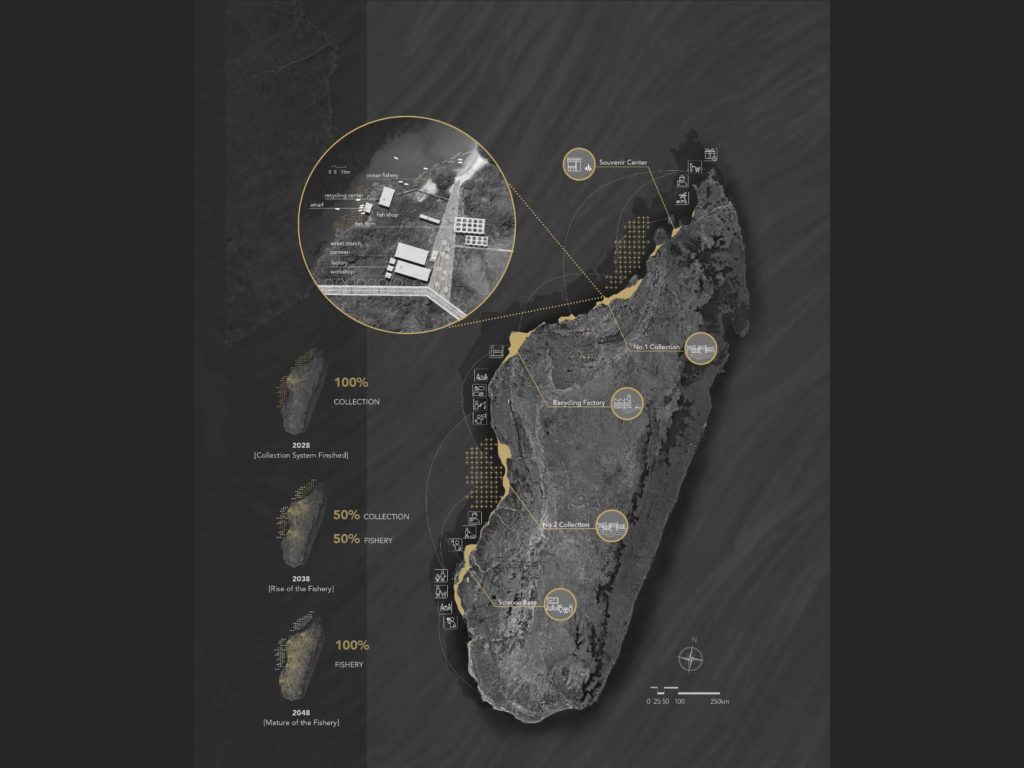
Anson Ting Fung Wong (MLA ’19) for “Stone Wall Trees 2040—Hong Kong” with a Student Merit Award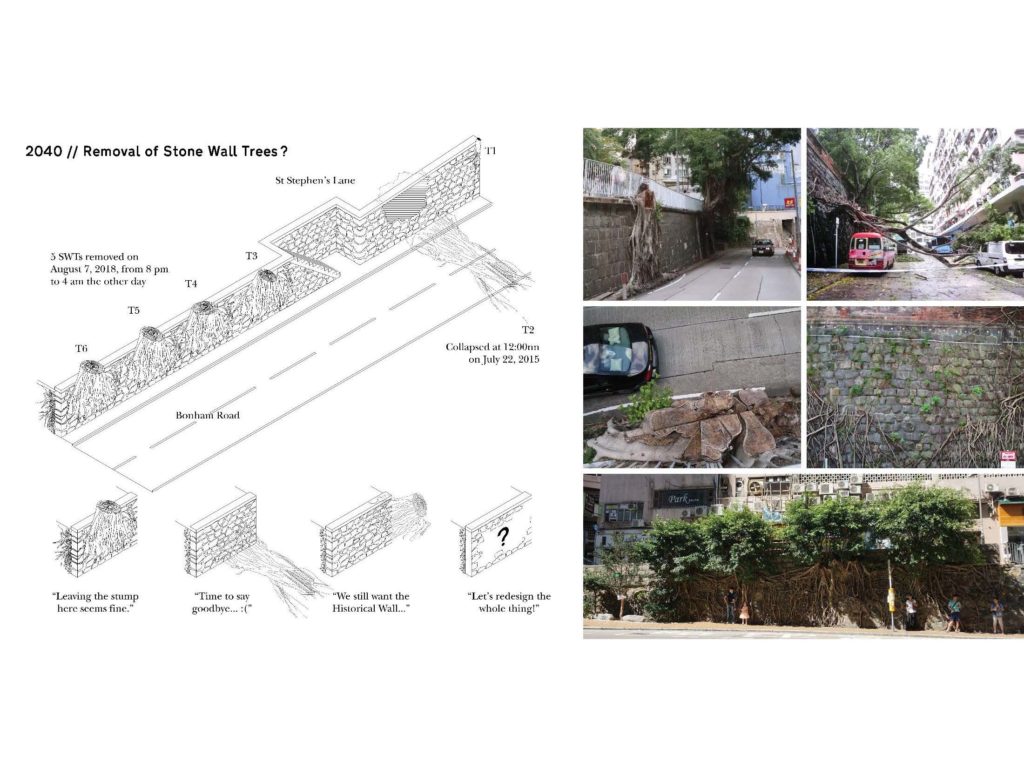
Estello-Cisdre Raganit (MLA ’19) for “Returning to the River: Water as Public Space—San Agustin Amatengo, Oaxaca, Mexico” with a Student Merit Award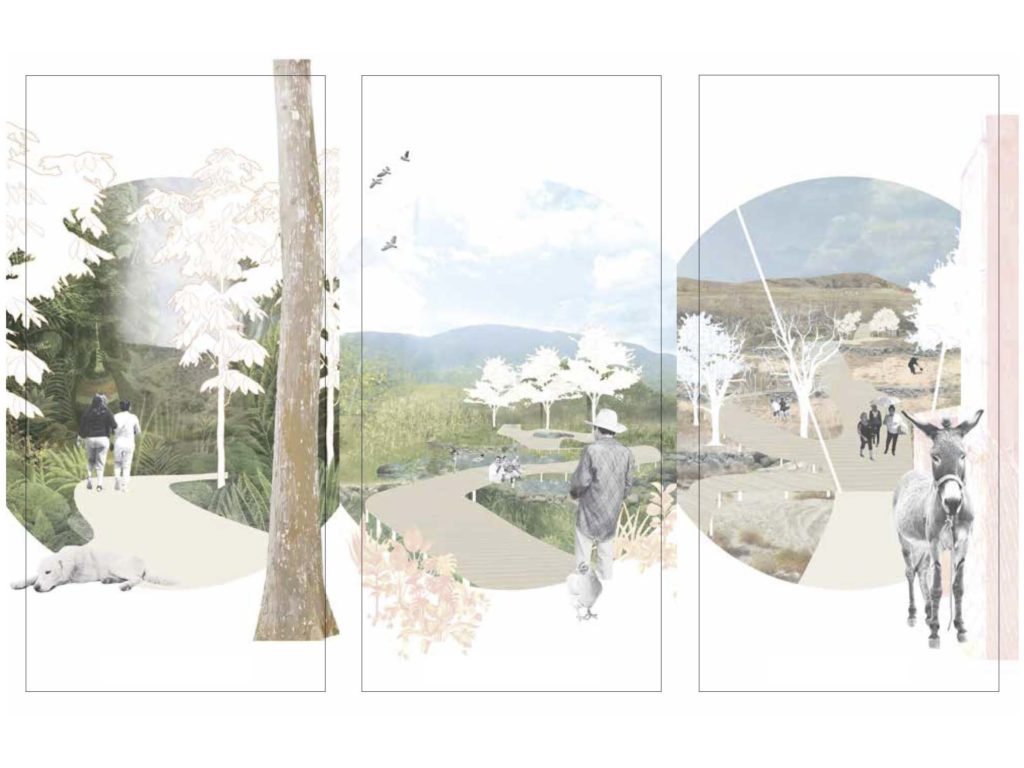
Tam Banh (MArch, MLA ’18) for “Water Assemblage—Mekong Delta, Vietnam” with a Student Honor Award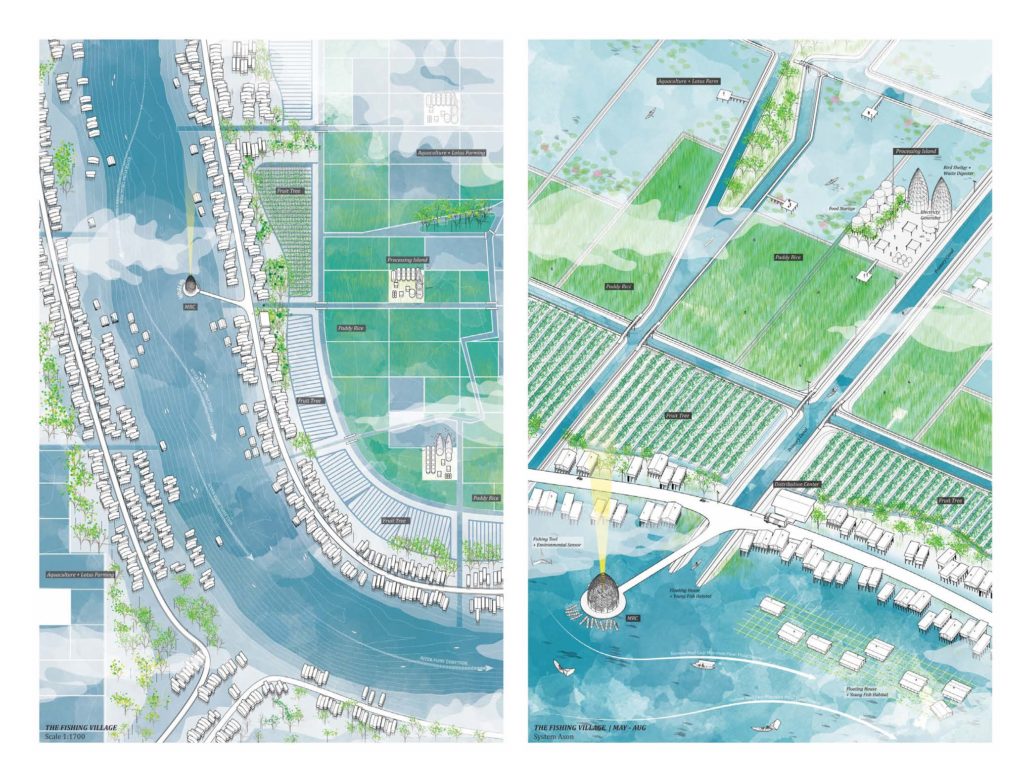
Amanda Ton (MLA ’19), Wei-Hsiang Chao (MAUD ’20), and Xin Qian (MAUD ’19) for “Mobility is Equality—Los Angeles, California” with a Student Honor Award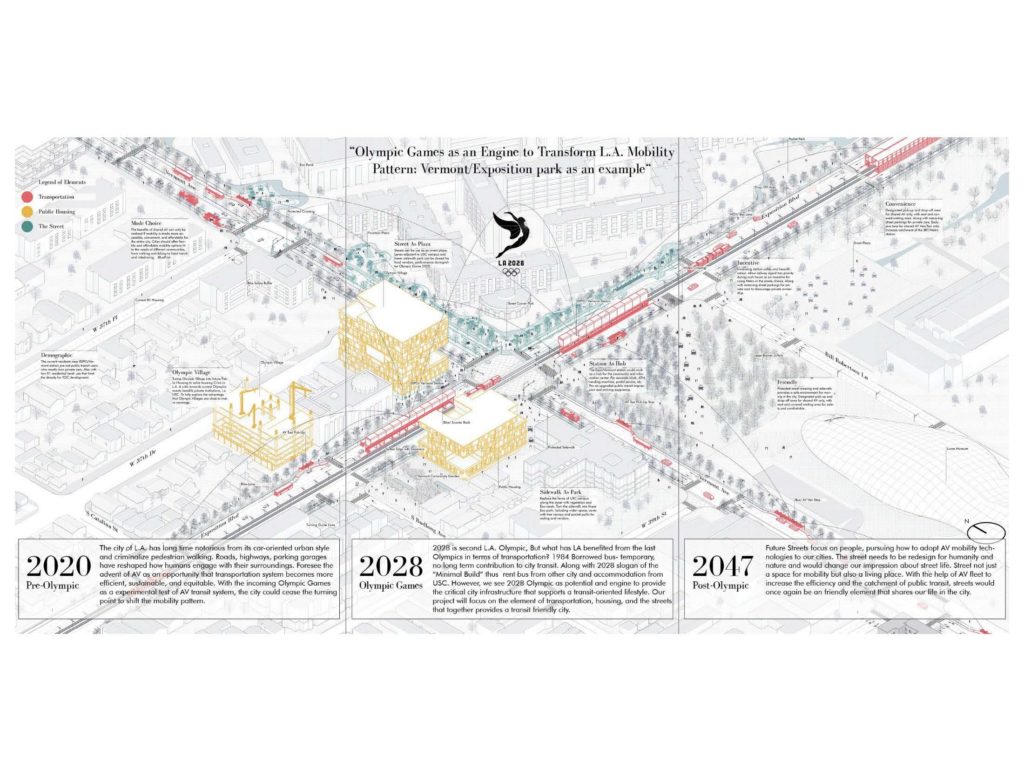
Tina Yun Ting Tsai (MLA ’20) for “Right to Remain—Willis Wharf, Virginia” with a Student Excellence Award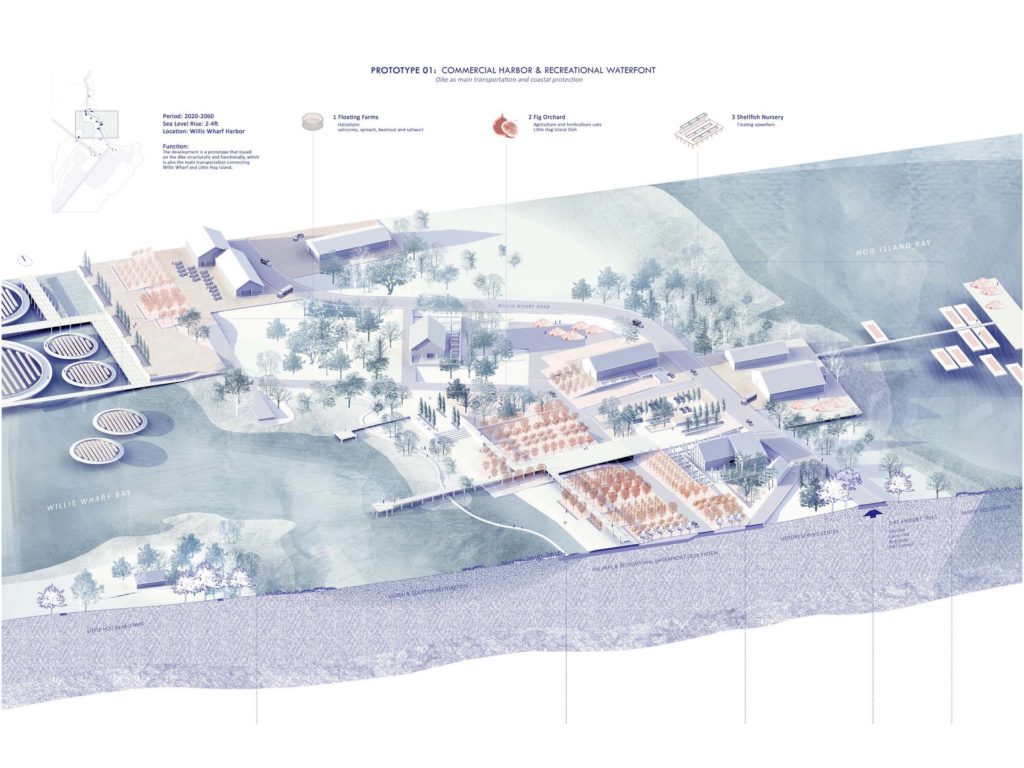
GSD faculty and alumni were among the professionals awarded by the BSLA. GSD affiliated winners include:
- Agency Landscape + Planning , led by Gina Ford (MLA ’03) and Brie Hensold (MUP ’07)
- Coyle and Caron , co-founded by Sally Coyle (MLA ’95)
- Crowley Cottrell , co-founded by Naomi Cottrell (MLA ’02)
- Halvorson , led by Cynthia Smith (MLA ’84)
- Landworks Studio , founded by Michael Blier (MLA ’94)
- Merritt Chase , founded by Nina Chase (MLA ’12) and Chris Merritt (MLA ’17)
- Matthew Cunningham Landscape Design , founded by GSD alum and lecturer Matthew Cunningham (MLA II ’06)
- Reed+Hilderbrand , co-founded by Peter Louis Hornbeck Professor in Practice of Landscape Architecture Gary Hilderbrand (MLA ’85)
- Sasaki Associates , led by James N. Miner (MUP ’01) and other GSD affiliates
- Stimson Studio , co-founded by Stephen Stimson (MLA ’87)
Browse the full list of 2020 BSLA Award recipients .
Art, Design, and the Public Domain Publication Features Class of 2019
The Art, Design, and the Public Domain (ADPD) concentration of the Master in Design Studies program has published a collection of projects by the graduating class of 2019. The booklet features work by Kathryn Abarbanel, Inés Benítez Gómez, Hanna Kim, Je Sung Lee, Eric Moed, Mallory Rukhsana Nezam, Penelope Phylactopoulos, Andrew Scheinman, Mindy Seu, Daniel Shieh, and Alicia Valencia. According to the publication’s introduction: “The public domain is a space for the assertion and dissemination of human and civil rights. It is a space both digital and physical, open for exchange, confrontation, and collaboration by singular, plural, and collective voices. It allows and encourages public concerns to be addressed and acknowledged as public, no matter how suppressed they may be.” The ADPD concentration is led by the GSD’s Malkit Shoshan and Krzysztof Wodiczko. Take a look inside:Addressing COVID-19 world, students take top honors at World Landscape Architecture competition
Harvard Graduate School of Design students Joanne Li (MLA I ’21) and Tian Wei Li (MLA I ’22) won first place in the World Landscape Architecture international competition Reimagining the Spaces in Between . Their project, “Biodiversity Bank,” was supported by a GSD Summer Emergency Fund grant and advised by Design Critic in Landscape Architecture Rosalea Monacella. The ideas competition challenged students to redesign an area in a fictional city impacted by the COVID-19 pandemic.
In their entry, the students explained: “When you visit our project, you will see open spaces between buildings transformed into a living interface where the microbiome grows. Have you noticed that during COVID, alimentary and organic disposables have become more abundant, now that your home and kitchen are the center of your life? The ‘Biodiversity Bank’ interface is a receptacle for organic food leftovers. The Bank produces nutrients for the bacteria and soil. Then, the spatial design incorporates these nutrients to support macro-scale biodiversity, producing social and ecological benefits.”
“An innovative response that highlights the (often-overlooked) importance of soil and bacteria for health and well-being and maintenance of life,” noted the competition’s jury. “The solution presents the concept of city as a mutually symbiotic organism with everything inter-related. Interesting solution and compelling graphics. Appealing typologies such as orchards, meditation gardens and compost gardens that come together to create a startlingly different type of city solution.”
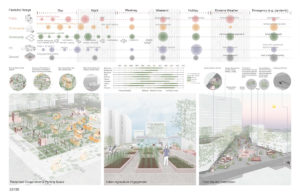
The runner-up prize went to Xi Chen (MLA I ’21), Sophia Xiao (MLA I ’21), Siqi Zhu (MLA II ’22), and Xuezhen Xie (Cornell) for “LIVING GROUND: Redefine six-feet distancing.” Their project looks at different scenarios for organizing outdoor activities on a six-by-six foot grid. “An aggressive scheme that reclaims public spaces for the public,” commented one juror.
Urban Planning Students Place at APA National Student Design Competition
In a first for the Harvard Graduate School of Design, a group of urban planning students has placed at the American Planning Association (APA) National Student Design Competition . David Bemporad, Carlee Griffeth, Julian Huertas, Danny Kolosta, and Nora Tufano (all MUP ’21) won third prize for their project “KREATE: Creating a healthier, more equitable, sustainable, and opportunity-rich Kashmere Gardens .” Now in its fourth year, the APA National Student Design Competition seeks to “raise interest in the need for equitable, responsible, sustainable, and resilient communities for all among the leaders of tomorrow in the fields of planning and urban design.”
“KREATE” proposes a series of policies, programs, and investments for the Houston community of Kashmere Gardens, which is threatened by flooding, unsafe infrastructural conditions, soil contamination, and displacement by gentrification. The team’s plan is organized around eight key community priorities:
- Ensure that the community benefits from new investment
- Increase high-quality housing options for residents of all income levels
- Leverage opportunities created by existing large infrastructure
- Align citywide plans with the community’s goals
- Optimize environmental assets and awareness
- Support workforce development and community entrepreneurship
- Promote healthy communities
- Build the capacity of the management district
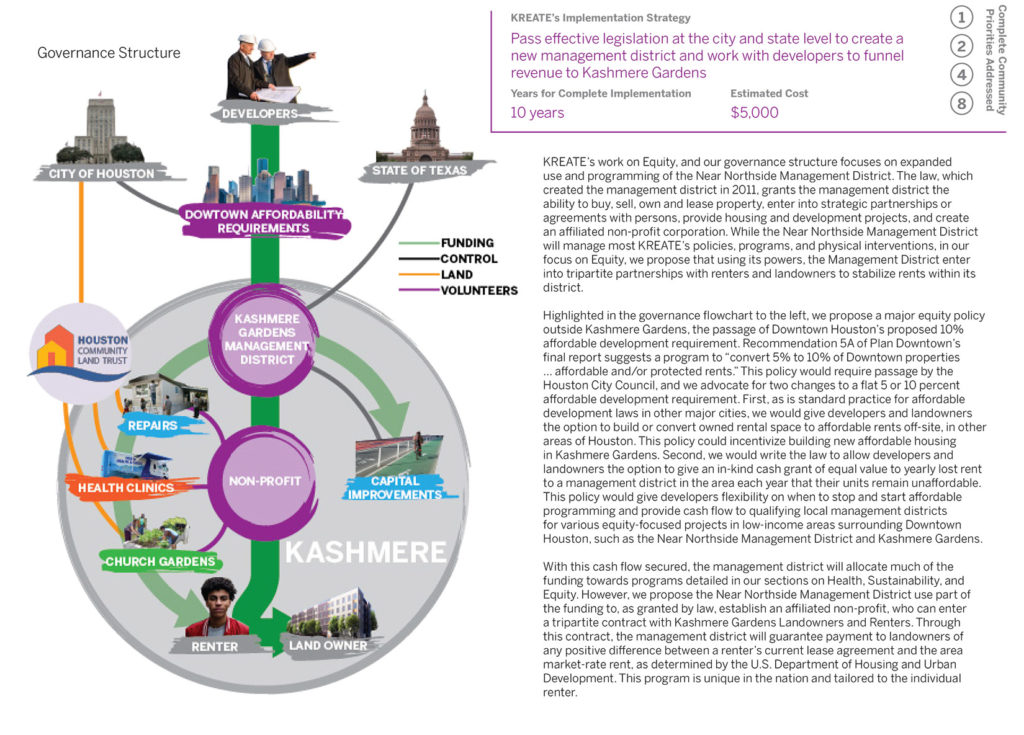
“KREATE” seeks to execute these eight priorities within four implementation strategies: equity, health, sustainability, and opportunity. Read the full report on the APA website.
Fourth Publication of Krzysztof Wodiczko’s Transformative Avant-Garde and Other Writings Forthcoming
The fourth publication of Transformative Avant-Garde and Other Writings by Krzysztof Wodiczko, professor in residence and area head of MDes ADPD, will be released by Black Dog Press. Featuring a collection of Wodiczko’s writings from the 1970s to the present, the book offers deep insight into his renowned large-scale projects and other public works.
At WW Architecture, Witte and Whiting to design new urban district for Taichung City, Taiwan
WW Architecture , the architectural practice founded by Professor in Residence of Architecture Ron Witte and Dean and Josep Lluís Sert Professor of Architecture Sarah Whiting, has won an international competition for the design of a new urban district in Taichung City, Taiwan. The 840-hectare site is adjacent to the Taichung International Airport.
The design team is being led by Witte and includes Whiting. Additional team members include Edda Steingrimsdottir (MArch ’22), Jonathan Ng (MArch ’22), Jorge Ituarte-Arreola (MAUD ’21), Hannah Hoyt (MArch ’21), Lara Hansmann, and Ilya Rakhlin. The initial phase design team included Alia Bader (MAUD ’21), Shovan Shah (MAUD ’20), Isaac Pollan (MArch ’22), Dan Baklik (MDes REBE ’21), and Isaac Tejeira (MAUD ’22). Stoss Landscape Urbanism , led by Professor in Practice of Landscape Architecture Chris Reed, is working with WW on the project.
Kim, Peiser analyze storm impact on housing values for Journal of Flood Risk Management
An article by Seung Kyum Kim (MDes ’16, DDes ’19) and Richard Peiser, Michael D. Spear Professor of Real Estate Development, analyzing how housing values in Miami‐Dade County have been impacted by storm frequency and intensity over the past three decades was recently published in the Journal of Flood Risk Management. “The Implication of the Increase in Storm Frequency and Intensity to Coastal Housing Markets ” is available to read for free through Wiley Online Library.
Publications by Blau, Eigen Shortlisted for 2020 CICA Bruno Zevi Book Award
The International Committee of Architectural Critics (CICA) recently announced its shortlist of titles for the 2020 Dennis Sharp CICA Awards . Among the seven candidates in the Bruno Zevi Book Award category are two book by Harvard Graduate School of Design faculty members.
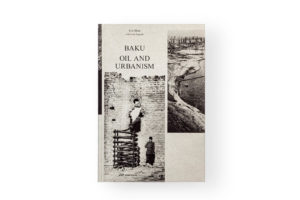
Baku: Oil and Urbanism (Park Books, Zurich 2019) by Eve Blau, adjunct professor of the history and theory of urban form and design and director of research, and Ivan Rupnik delivers an architectural study of the relationship between oil and urbanism with the Azerbaijan capital of Baku as focus. Learn more from the article “Further Reading: Eve Blau’s Baku: Oil and Urbanism.”
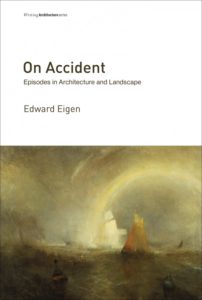
On Accident: Episodes in Architecture and Landscape (MIT Press, Cambridge 2018) by Edward Eigen, senior lecturer in the history of landscape and architecture, presents a series of essays on phenomena that fall outside the canon. It is the winner of a CHOICE Outstanding Academic Titles award for 2018.
The Bruno Zevi CICA Book Award recognizes published books on architectural criticism, theory, and history.
